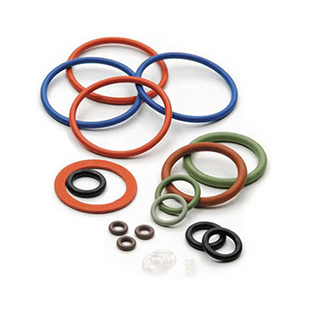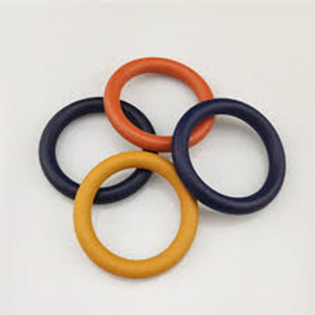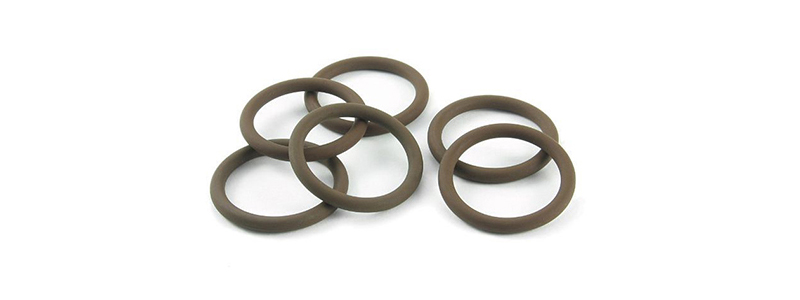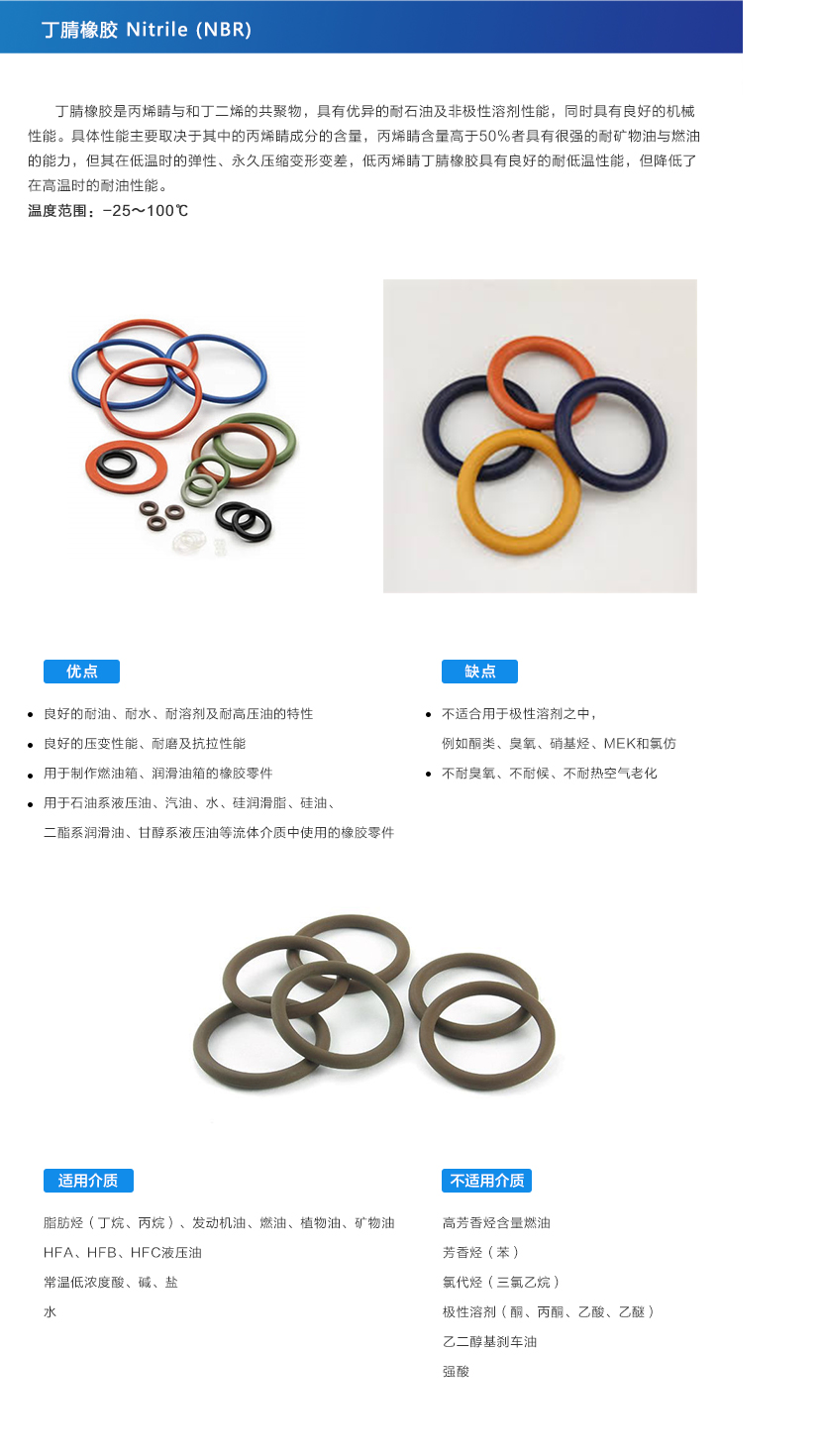NBR / SBR
Nitrile(NBR)
Nitrile(NBR) rubber is a copolymer of acrylonitrile and butadiene, with excellent resistance to petroleum and non-polar solvents, and good mechanical properties. The specific performance mainly depends on the content of acrylonitrile. Those with acrylonitrile content higher than 50% have strong resistance to mineral oil and fuel, but their elasticity and permanent compression deformation at low temperatures become worse. Low acrylonitrile nitrile rubber has good low temperature resistance, but reduces oil resistance at high temperatures.
Temperature range: -25~100℃

-
Advantages
- ● Good resistance to oil, water, solvents and high-pressure oil.
- ● Good compression resistance, wear resistance and tensile strength.
- ● Used to make rubber parts for fuel tanks and lubricating oil tanks.
- ● Used for rubber parts used in fluid media such as petroleum hydraulic oil, gasoline, water, silicone grease, silicone oil, diester lubricating oil, glycol hydraulic oil, etc.
-
Disadvantages
- ● Not suitable for use in polar solvents, such as ketones, ozone, nitro hydrocarbons, MEK and ammonia.
- ● Not resistant to ozone, weathering, and hot air aging.

-
Applicable media
- ● Aliphatic hydrocarbons (butane, propane), engine oil, fuel oil, vegetable oil, mineral oil
- ● HFA, HFB, HFC hydraulic oil
- ● Low-concentration acid, alkali, salt at room temperature
- ● Water
-
Unsuitable media
- ● Fuel with high aromatic content
- ● Aromatic hydrocarbons (benzene)
- ● Oxygenated hydrocarbons (triethylene oxide)
- ● Ethylene glycol-based brake fluid
- ● Polar solvents (ketone, acetone, acetic acid, ether)
- ● Strong acid
Fill out my online form.

Copyright (C)2016 Wuxi JUNR Technology Co.,LTD. All Rights Reserved Case No:Su ICP Recod No 13045256





